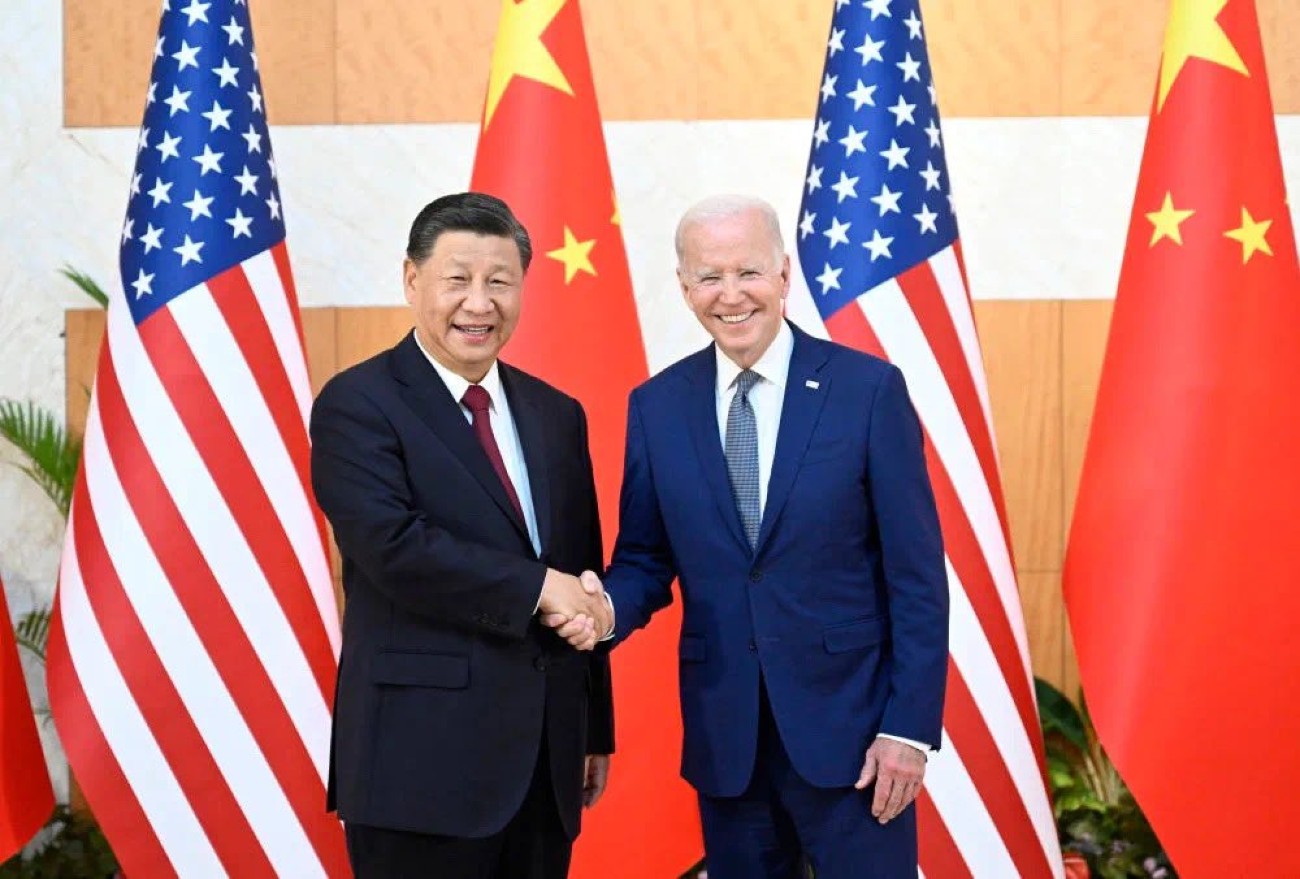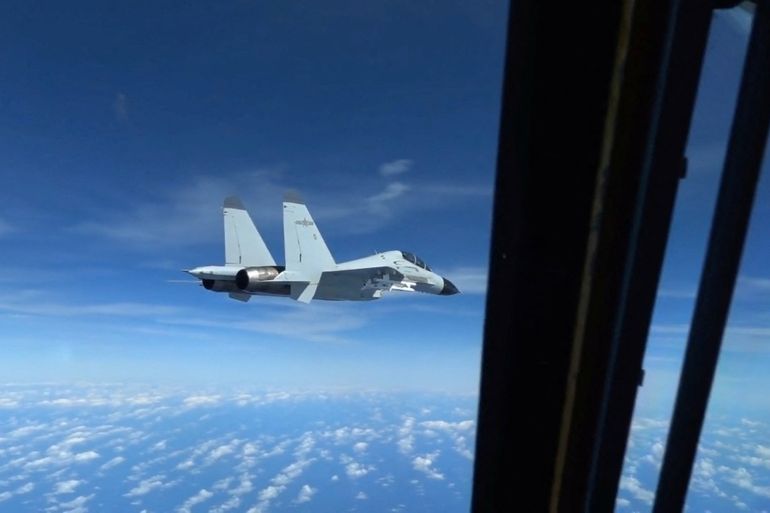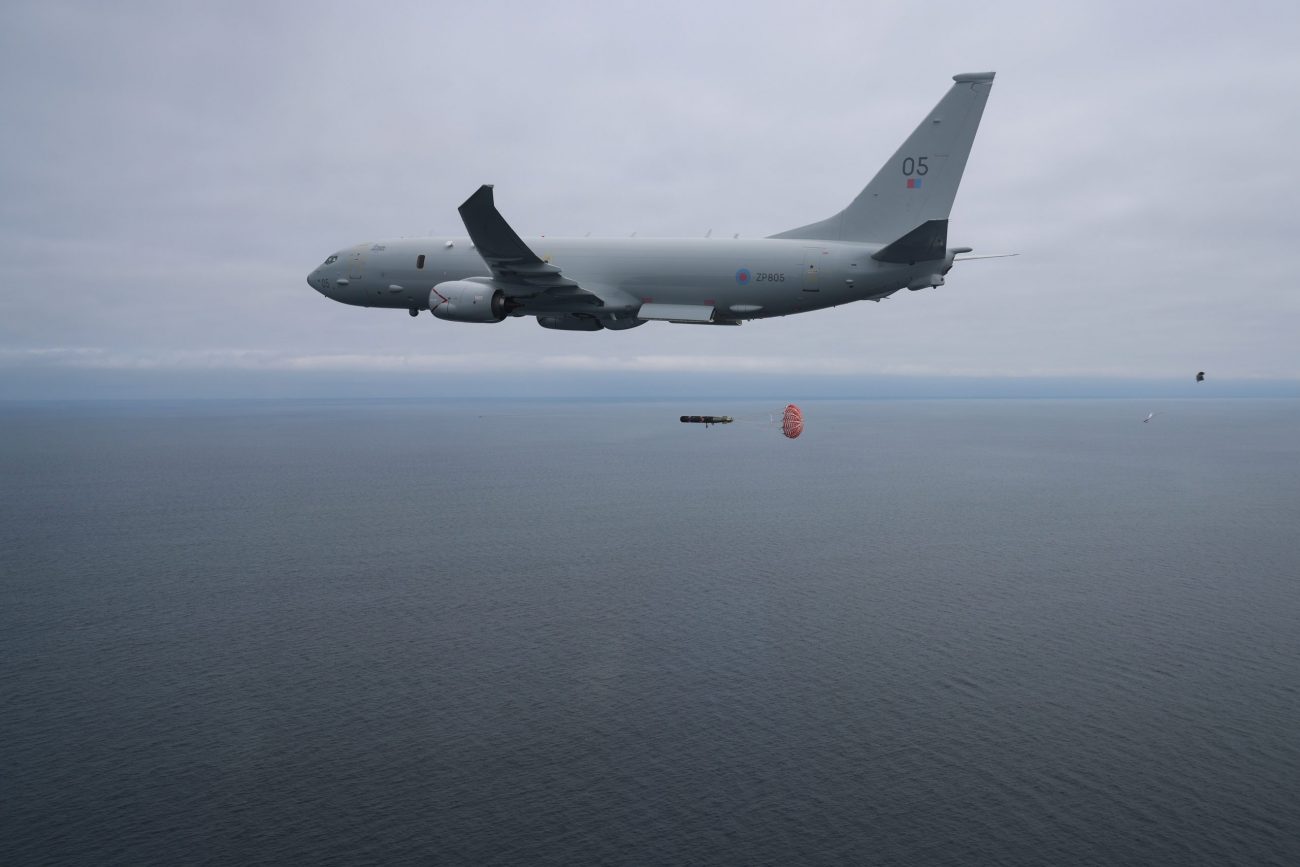The latest report released by a Beijing-based think tank has highlighted that the United States carried out “intensive military activity” in China’s backyard, despite the Ukraine war.
The South China Sea Strategic Situation Probing Initiative (SCSPI), a Beijing-based think tank, said in an annual report on US military activities in the South China Sea last year that the US military prioritized military deterrence against China despite the raging Russia-Ukraine war in Europe.
According to the report, Washington maintained a high level of close-in reconnaissance operations in the South China Sea and sent ships and aircraft through the Taiwan Straits, state-run Global Times reported.
The data published by SCSPI revealed that the US flew nearly 1,000 reconnaissance sorties over the South China Sea in 2022, many flying within 13 nautical miles of China’s maritime territorial baseline. A territorial sea extends to about 12 nautical miles from the baseline.
The SCSPI report gave way to harsh criticism of the US from Chinese military experts who angrily stated that US reconnaissance attempts would only provoke China and call for more countermeasures from the country “that go against US wishful thinking.”
The report comes amid rising tensions between the United States and China since August 2022, when US House Speaker Nancy Pelosi visited Taiwan. China protested and retaliated to the visit by carrying out large-scale joint military drills surrounding Taiwan.
The tensions between the two rivals peaked again in February this year after the United States Air Force shot down an alleged Chinese spy balloon. Both sides have since accused each other of provocation and conducting surveillance.

US Recon Trips Around China
According to the think tank, US nuclear-powered attack submarines were observed in and around the area at least 13 times. US Carrier Strike Groups and Amphibious Ready Groups entered the South China Sea eight times.
The tensions in the Taiwan Straits significantly increased after Nancy Pelosi’s trip to the island of Taiwan in August 2022, according to the SCSPI, and the US military’s forward deployment in the South China Sea closely coordinated with those in the Taiwan Straits and the East China Sea.
The report further says that the frequency and severity of US military operations against China in the South China Sea have increased since 2009. It adds that this trend continued well into 2022 when the Russia-Ukraine crisis erupted.
A Chinese military commentator Song Zhongping told Global Times that since Ukraine and its NATO allies are engaged in a “proxy war,” the US did not significantly boost its military footprint in Europe during the Ukraine crisis. However, he observed that the US feels compelled to lead from the front in the Asia Pacific and get its allies to follow its footprints to confront China.
The SCSPI said the US was also aggressively politicizing its military operations, purposefully enhancing media coverage of its operations involving China, and frequently exaggerating legitimate Chinese interceptions as “dangerous” or “unprofessional.”

In December last year, the US military accused a PLA Air Force of a dangerous mid-air interception over the contentious South China Sea. The US Indo-Pacific Command (INDOPAC) alleged a Chinese J-11 fighter pilot performed an “unsafe” maneuver during an intercept of a US Air Force RC-135 aircraft. Subsequently, a video was also released supporting the accusation.
The Chinese jet fighter can be seen in footage of the encounter passing within a few meters of the nose of the much bigger spy plane, a maneuver that the US claimed led the Chinese pilot to take “evasive” action to avoid a collision. The US claimed that while carrying out routine tasks in international airspace, its aircraft were operating “lawfully.”
Besides the US, its allies operating in the Indo-Pacific region – Australia and Canada – have also made similar claims.
For instance, the Australian Defense contended in the summer of 2022 that the PLA Air Force J-16 aircraft carried out a dangerous interception of the Royal Australian Air Force (RAAF) P-8 Poseidon aircraft. It went so far as to say that the Chinese fighter jet also fired flares at the RAAF aircraft.

However, Chinese officials and analysts have maintained that the country acted well within its rights. At the time, Chinese experts said that the PLA warplanes “handled” close-range reconnaissance and aggressive activities by surveillance planes from Canada and Australia on China in the East China Sea and the South China Sea, respectively.
They accused the two US allies of leveling these accusations against the PLA Air Force even though they were the ones who were at fault in the first place.
For several months, China has continued accusing the United States of conducting intense reconnaissance and military activities in the South and China Seas. Therefore, the SCSPI report is not the first to open Pandora’s box.
For instance, in February, MizarVision, a Chinese technology and intelligence company, stated that the US military conducted close-range reconnaissance operations in the South China Sea more than 600 times in 2022 using spy planes, according to data from the open-source Automatic Dependent Surveillance-Broadcast (ADS-B) system.
According to MizarVision, the actual number may be higher because some US aircraft disable or employ false ADS-B trackers. According to the company’s surveillance, similar close-range reconnaissance flights were also undertaken in the East China Sea, notably in August, when the Chinese People’s Liberation Army (PLA) ran extensive drills near the island of Taiwan.
The SCSPI stated in the report that it is against the spirit of the UN Charter and the UN Convention on the Law of the Sea to conduct extremely extensive military drills and about 1,000 close-in reconnaissance sorties in a nation’s neighboring waters during peacetime.
SCSPI warned that excessive US deterrence and provocations against China would only lead to stronger countermeasures beyond US wishful thinking.
- Contact the author at sakshi.tiwari9555 (at) gmail.com
- Follow EurAsian Times on Google News




